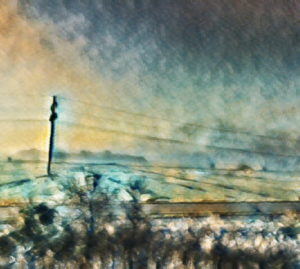How did it all happen, in the studio? When compiling FILM MUSIC 1976-2020, Brian Eno was looking back, making decisions. When the idea for MUSIC FOR FILMS began to take shape, he still was in the early years of „ambient music“, working between pop and avantgarde. How did that album from 1978 grow? Both soundtrack albums (from 1978 and 2020) have an impressive sequencing of tracks. I remember Eno changed the sequence when Polydor did the second or third edition of the album with the grey cover. Change the sequence, and you change the narrative.
Revelations. Of course, there were certain movies and soundtracks that inspired his ways to add a special impact on moving pictures. Fellini‘s „Julia and the Spirits“ was one of them. I asked him about another unforgettable movie. And how he did approach a soundtrack for films he might not even have seen. What kind of work it was to get this new compilation going? Though composed out of many different sources, this new album is unspooling in vivid horizons, and definitely finding a unique flow. You can hear Brian‘s answers to these two, three questions during the long night of „Klanghorizonte“ on December, 26th.
Polarities. What an interesting zigzagging (I know this word from a Robert Wyatt song), between timelines, on the new compilation. No chronological order. The polarities of old/new, lo-fi vs. hi-fi, ancient instruments vs. today’s technology, the artist as young man vs „highly experienced artist“, quiet unknown gems vs. famous ones, naivety & wonder (of early years) vs. a slightly different kind of wonder (later on) – they all are wonderfully ignored and suspended in air.
„Dune“. I like several movies of David Lynch very much, and was addicted to his TV series „Twin Peaks“. Decades later, „Twin Peaks -The Return“ was fantastic, in its working against nostlagia. I was really curious to see DUNE, by Mr. Lynch, and even more so that Eno contributed a track. But then i was totally disappointed by the film. And I didn’t like the music when it entered the scene. I was really surprised how much I like this track now, having heard it for the first time im a very long time, in a new context.
„Last Tango in Paris“. I saw Bertolucci’s movie on the island of Borkum when it came into the cinemas, with all its cult status from the beginning. I didn‘t like this movie. I didn‘t like the figure Marlon Brando played. And I felt no sympathies for any of the persons acting. For me, all the emotions the people were lacking or not able to show, were contained in the soundtrack from Argentine saxophone player Gato Barbieri. I loved that soundtrack, every second of it.
A bar at night. Arrecife, Lanzarote, round 1998. I was talking with one of the musicians of Bang on a Can who had just performed Music for Airports in Jameos del Agua. At one point we spoke about the album „Music for Films“. He said something like: – that is an album full of ideas, sketches. Other artists could make whole albums out of two or three of the pieces. it‘s like fragments not fleshed out. I said something like: – the shortness of the compositions, their fragmented nature, is probably the reason I can listen to it without end. I always wish those tiny moments would stay longer, but they are gone with the blink of an eye.
„Sparrowfall“. How great, „Sparrowfall“ got three treatments! Richard Williams‘ review of „Music for Films“ comes to my mind, from the „Melody Maker“. He called it „Modern Mood Music“ – I never forgot his lines on those three albums in one text, along with Weather Report‘s „Mr. Gone“ (not their best) and Jan Garbarek‘s „Places“ (vintage Garbarek, with virtuoso pianist John Taylor playing a slightly damaged mini electric organ).
